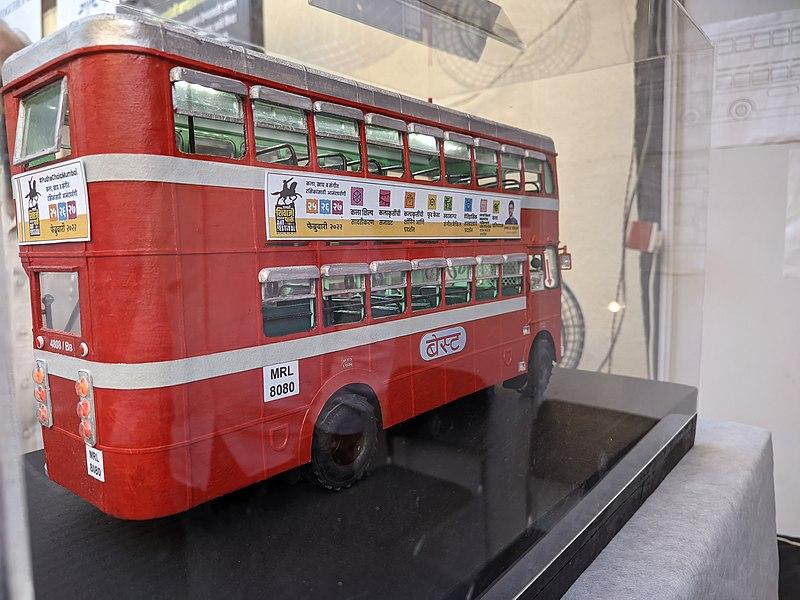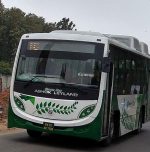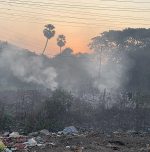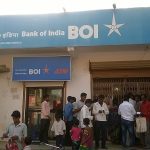Farewell to Mumbai’s iconic red double-decker buses

Mumbai, a city known for its vibrant culture and bustling streets, has bid a nostalgic farewell to a beloved icon that has been a part of its landscape for 86 years.
The iconic red double-decker buses, reminiscent of London’s famous red buses, have etched their presence into the hearts of Mumbaikars and visitors alike.
As these towering vehicles take their final bow, go through their history and significance, which has left an indelible mark on the city.
Mumbai’s beloved red double-decker buses, a symbol of the city’s charm for 86 years, bid their farewell.
These towering vehicles, reminiscent of London’s iconic buses, played a pivotal role in Mumbai’s history, dating back to their introduction in 1937. Here’s a glimpse into their journey and significance.
In 1940, the first Limited Bus service was launched between Colaba and Mahim, marking a milestone in Mumbai’s public transportation.
By the 1960s, Mumbai boasted 26 bus routes, with double-decker buses becoming iconic symbols.
They were adored by both tourists and locals, offering serene rides through less congested South Mumbai streets.
Passengers relished the breathtaking city views from the upper deck, a cherished memory for many.
Before auto-rickshaws arrived in the suburbs, these buses provided crucial last-mile connectivity.
A bustling route from Santacruz station to Juhu Church thrived during rush hours.
Originally named after letters of the English alphabet, they transitioned to numerical designations as the city expanded.
Routes like 123 and 130 took passengers on scenic journeys past landmarks like Marine Drive and Crawford Market.
Despite their iconic status, it is all set for the phase-out of these buses by 2023.
The number of these buses was 900 in the 1960s. But it was dwindled to 48 before they were phased out recently.
The scarcity of spare parts, transportation challenges, high fuel consumption, and operational costs contributed to their decline.
Ashok Leyland began producing these buses in India in 1955, previously supplied by foreign companies during British rule.
As Mumbaikars bid adieu to Mumbai’s double-deckers, they leave cherished memories and a rich history behind.
Their legacy will forever remain a part of the city’s unique charm.
Image Credit: Pratishkhedekar, CC BY-SA 4.0, via Wikimedia Commons
You may also like
Image Reference: https://commons.wikimedia.org/wiki/File:Model_of_a_Double-Decker_bus_of_Mumbai_01.jpg
Recent Posts
- Bank of India announces Apprentice Recruitment 2026Interested candidates can apply through the official website until January 10, 2026.
- Delhi launches ₹5 Atal Canteens to ensure food with dignityThe decision to launch Atal Canteens was taken on this significant day.
- BiofuelCircle turning farm waste into rural wealthFounded in June 2020 by Suhas Baxi and Ashwin Save, BiofuelCircle builds value from farm waste.
- Bank of India announces Apprentice Recruitment 2026
What’s new at WeRIndia.com
News from 700+ sources
-
Saatvik Green Energy bags additional solar pumps order from Maharashtra state utility
-
Titan to enter lab-grown diamond with brand name beYon
-
PSB consolidation to gain momentum in 2026 as Govt eyes big, world-class banks
-
Wild boar pins down forest officer in UP for two minutes despite being beaten with sticks: Watch chilling viral video
-
Veer Bal Diwas: PM Modi hails Sahibzadas who shattered fanaticism with unmatched courage
-
‘My son cant see. how do I explain colours to him?’ Check India’s most searched how to questions in 2025
-
WeRIndia – A News Aggregator
Visit werindia.com for all types of National | Business | World | Politics | Entertainment | Health related news and much more..










Leave a Reply